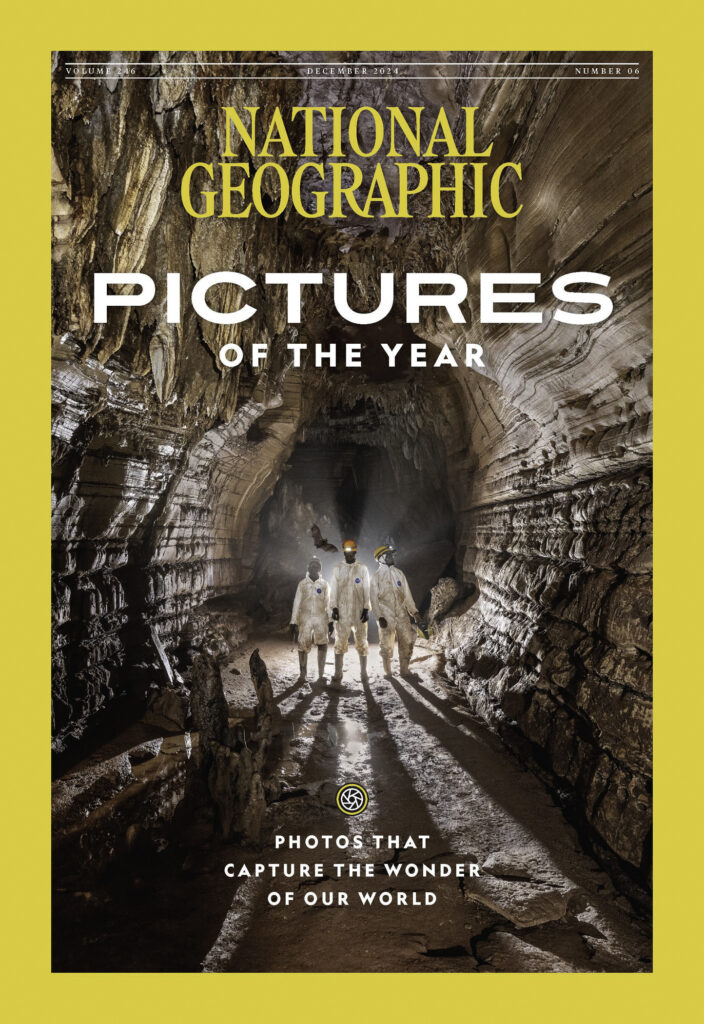For more than 135 years, National Geographic has upheld its mission to inspire people to care about the planet, using storytelling to illuminate the beauty and complexity of the natural world. Since publishing its first black-and-white photographs in 1905 and debuting color images the following decade, the magazine has continued to push the boundaries of visual storytelling.
National Geographic’s 2024 “Pictures of the Year” collection exemplifies this legacy, capturing moments that deepen our understanding of the planet’s fragile ecosystems, awe-inspiring landscapes, and resilient creatures. Chosen from 2.3 million images, these photos remind us why we must take action now to protect our planet.
– Mark Edward Harris, Director of Photography, Better Magazine

Hope for the Rhino
A scientist holds the 70-day-old fetus of a rhino conceived through in vitro fertilization.

Penguins Take the Plunge
A young emperor penguin jumps off a 50-foot cliff for its first swim. The species normally breeds on low-lying sea ice, but some colonies have been found on higher and more permanent ice shelves, behavior likely to become increasingly common with climate change. Left by their parents a month earlier, the chicks must fend for themselves and find food by hunting in the sea.

Fuego’s Eternal Eruption
Fuego Volcano has been erupting continually since 2002. A one-day hike up its dormant twin, Acatenango, and across a valley rewards adventurers with a view from Fuego’s ridgeline. Eruptions can occur multiple times a day.

Siwa Oasis: Beauty and Decline
Siwa Oasis is in Egypt’s Western Desert and draws tourists to its dunes (left). But dead palms expose a declining ecosystem.

A Sanctuary for Macaws
Macaws are highly social birds that live an average of 40 to 60 years and often exhibit stressed behavior in captivity. This makes them challenging pets, so many end up in the Oasis Sanctuary, which provides permanent care for 800 parrots, including macaws. Here, Janet Trumbule, who runs the refuge, tries to coax them down with walnuts, a favorite food.

Bongolo Cave’s Climate Secrets
The December 2024 National Geographic cover image was taken in Bongolo Cave where researchers — joined by a bat — work to create a record of past rainfall by analyzing stalagmites, calcium carbonate formations created by water dripping over thousands of years onto the cave floor. The Western African Paleoclimate Project’s goal is to understand the climate threats to agriculture across the region.
For more National Geographic “Pictures of the Year” visit NatGeo.com/Photos.
How to Help:
The National Geographic Society leverages science, exploration, education, and storytelling to protect and celebrate the wonders of the world.
The Society’s Giving Tuesday fundraising initiative will support its mission and the work of Explorers in over 140 countries. Contributions will immediately support critical efforts, including saving wildlife, protecting oceans, empowering leading scientists and innovators to tackle the planet’s challenges, and preserving cultural heritage for future generations.
Whether establishing vast marine reserves, restoring essential freshwater ecosystems, or unveiling new perspectives through cutting-edge photography, National Geographic’s global community of Explorers and impact programs are driving conservation efforts and creating a sustainable future. Together, these initiatives aim to safeguard the planet’s natural treasures and inspire change on a global scale.

- Paul Nicklen, Cristina Mittermeier, Bill Kurtis and Donna LaPietra: 4 Eco-Warriors on How to Save Our Oceans and Planet Now
- ‘Together, We Are Making Big Waves’: Pioneering Marine Biologist and National Geographic Explorer Sylvia Earle Says It’s Not Too Late to Save Our Oceans
- James Cameron’s ‘Secrets of the Whales’ Will Make You Want to Fight for Our Oceans
